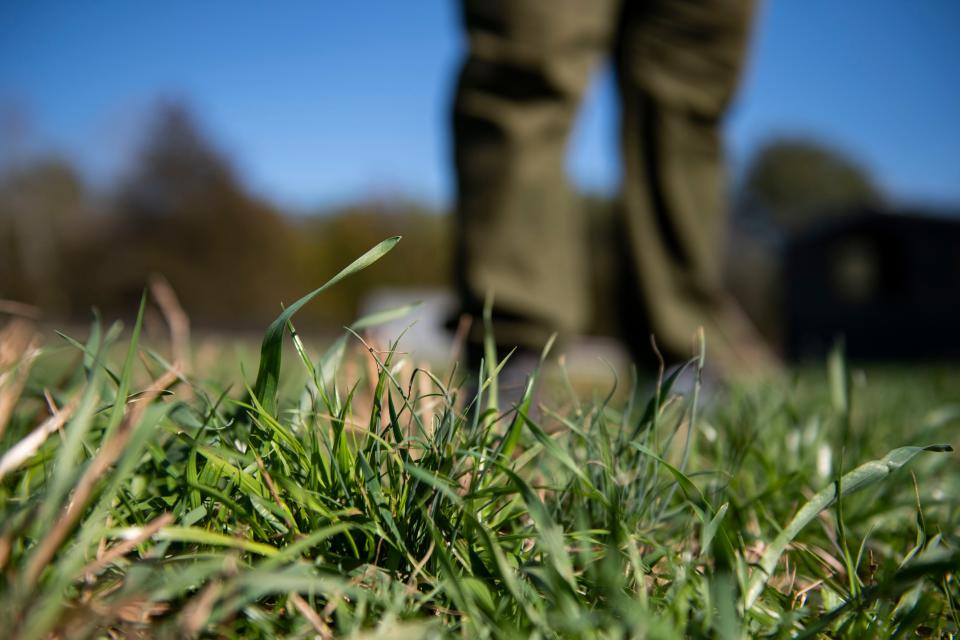Drought declared statewide in SC after minimal rainfall in June, farmers impacted most
South Carolina’s 46 counties have been upgraded to drought status following the state Drought Response Committee’s July 9 meeting.
This summer’s drought declaration comes after an extremely dry June when much of the state received less rainfall than needed. July’s drought marks the second drought declaration for South Carolina in a year.
South Carolina’s committee uses five levels to describe drought levels in counties throughout the state: Normal (no drought), incipient, moderate, severe and extreme. On Tuesday, 12 counties were upgraded to an incipient drought status, meaning they are experiencing the first level of drought. Across South Carolina, 19 counties were upgraded to moderate drought and 15 counties were upgraded to severe drought.

Counties in the Upstate were primarily upgraded to incipient drought. However, Abbeville, Laurens, Greenwood and McCormick counties were all declared moderate. The counties in severe drought are concentrated in the northeast part of the state, spanning from Calhoun to Georgetown and Horry on the East Coast and Lancaster, Chesterfield and Marlboro at the northern border.
In a press release from the state’s Department of Natural Resources Tuesday, State Climatologist Hope Mizzell said increasing 15 counties from no drought to severe drought is unprecedented.
The last time the state declared a drought in every county was June 2022.
June temperatures soared, 2024 among 10th warmest June months
According to the DNR release, June 2024 was also among the 10th warmest June months on record. Maximum temperatures were high, including a 106-degree measurement at the University of South Carolina in Columbia on June 25, but temperature lows were also higher than normal.
Many locations across the state received less than 2.5 inches of rain, the DNR release read. As reported by The Greenville News earlier this week, Greenville-Spartanburg International Airport (GSP) measured only 1.88 inches of rain in June.
The dry weather in June was a shift from wetter conditions earlier in the year, making this a flash drought. According to the National Oceanic and Atmospheric Administration and the National Integrated Drought Information System, South Carolina received normal to above-normal rainfall throughout spring.
On average, the Palmetto State received about 18.72 inches of rain from January to May, as data from 1895 to 2024 showed. This year, 21.41 inches of rain fell across the state for the first five months of the year, about 2.69 inches above average.
”Things were looking good in early June,” Mizzell said in an interview with The News last week. “Then unfortunately, that's when the dry weather hit us and we started to see those impacts increase.”

SC farmers affected most by drought
The committee uses various impacts to decide whether to declare drought. Among them are data from the U.S. Drought Monitor, water levels in streams, lakes and rivers, rainfall and propensity for wildfires. Additionally, the committee takes impacts to farmers into consideration. Mizzell said farmers are likely experiencing worse impacts than other residents throughout the state.
Some livestock farmers have already started feeding hay rather than relying on their cover crops, which is atypical for this time of year.
“Due to deteriorating pasture conditions, many have resorted to feeding hay as early as the end of June and are concerned about having enough hay to get through the winter months. Some producers have been selling overstock to reduce feeding cost,” the DNR release read.
Read more: An Upstate drought ended in January. For farmers, the ramifications lasted for months.
U.S. Farm Service Agency Farm Programs Chief Linda Williams said the drought has already impacted the corn crop this year, leaving fields “dry and unproductive.”
According to the U.S. Department of Agriculture’s National Agricultural Statistics Service July 8 Crop Progress Report, nearly 60% of the South Carolina corn crop was in poor or very poor condition.
If producers don’t receive adequate rainfall soon, the cotton, soybean and peanut crops could also suffer, according to Williams.
The committee also cited increased wildfires as a reason for the drought declaration. From June 1 to July 7, the state’s Forestry Commission reportedly responded to more than 200 wildfires over 1,200 acres – about 77% higher than the state’s 10-year average.
The committee will continue to monitor conditions until the drought declaration is lifted. The next meeting is scheduled for July 24, according to Mizzell.
Sarah Swetlik covers climate change and environmental issues in South Carolina's Upstate for The Greenville News. Reach her at[email protected] or on X at @sarahgswetlik.
Have a question for Sustainability with Sarah? Ask here or email [email protected].
This article originally appeared on Greenville News: Statewide drought declared in South Carolina during hot, dry summer
